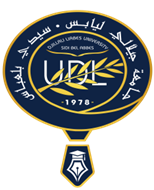Browsing by Author "HADJARI MOHAMED"
Now showing 1 - 1 of 1
Results Per Page
Sort Options
- ItemIMPACT DE L’ALIMENTATION SUR LE STATUT REDOX, LES LIPIDES, LES ACIDES GRAS ET LES MARQUEURS D’INFLAMMATIONS CHEZ DES FEMMES ATTEINTES DU SYNDROME METABOLIQUE.(2015-11-26) HADJARI MOHAMED; Encadreur: BEREKSI REGUIG KARIMARésumé (Français et/ou Anglais) : RESUME Des études récentes ont montré l’intervention des facteurs environnementaux dans la genèse du syndrome métabolique, il est admis que l’augmentation de tissu adipeux abdominal induit une insulino-résistance, un stress-oxydant et une inflammation. Notre travail vise à mettre en évidence le déséquilibre alimentaire et la variation des paramètres métabolique, les marqueurs d’inflammation, le statut oxydant et antioxydant chez des femmes présentant un syndrome métabolique. Cette étude a porté sur 178 patientes atteintes de syndrome métabolique comparé à 171 sujets témoins. La glycémie, l’insulinémie, l’indice d’insulino-résistance (HOMA), l’hémoglobine glyquée (HbA1c), le cholestérol total (Chol-T), le LDL-cholestérol (LDL-Chol), le HDL2-cholestérol (HDL2-Chol), le HDL3-cholestérol (HDL3-Chol), les triglycérides (TG), les VLDL-triglycérides (VLDL-TG), les HDL2-triglycérides (HDL2-TG), les phospholipides (PL), les HDL2-phospholipides (HDL2-PL), les HDL3-phospholipides (HDL3-PL), les apolipoprotéines A1 (Apo A1) , les apolipoprotéines B (Apo B), le fibrinogène, la protéine C réactive (CRP), l’urée, l’acide urique, la créatinine, la clairance de la créatinine, les substances réagissant avec l’acide thiobarbiturique liée aux LDL (LDL-TBARS), le statut anti-oxydant total (Sat), l’activité enzymatique de la superoxyde dismutase (Sod), de la catalase (Cat) et de la glutathion peroxydase (GPX), l’α-tocophérol, l’acide ascorbique, zinc et sélinium plasmatique ont été mesurés, ainsi que la consommation alimentaire et anthropométrie. Dans la population des malades étudiée par rapport aux témoins, l’état nutritionnel était déséquilibré, l’indice d’insulinorésistance, la concentration des LDL-TBARS, du fibrinogène et de la CRP plasmatique étaient augmentés. Le déséquilibre de l’état nutritionnel, l’augmentation de l’indice d’insulinorésistance, la concentration des LDL-TBARS et de la CRP plasmatique, ainsi que la diminution du statut anti-oxydant semble constituer un signe d’alarme des complications graves qui apparaîtront à moyen et long terme chez les femmes présentant un syndrome métabolique. Mots clés : Syndrome métabolique - Etat nutritionnel - Insulinémie - Lipides - Lipoprotéines Statut redox - CRP. ABSTRACT Recent studies showed the intervention of the environmental factors in the genesis of the metabolic syndrome; it is accepted that the increase in abdominal fat induces insulin resistance, oxidatif stress and inflammation. The objective of this study was to show the dietary imbalance and changes in metabolic parameters, inflammatory markers and oxidative and antioxidant status in women with metabolic syndrome. 178 patients and 171 controls were selected during general medicine examinations. glycemia, blood insulin levels, insulin resistance index (HOMA), glycated hemoglobin (HbA1c), total cholesterol (T-Chol), LDL-cholesterol (LDL-Chol), HDL2-cholesterol (HDL2-Chol), HDL3-cholesterol (HDL3-Chol), triglycerides (TG), VLDL-triglycerides (VLDL-TG), HDL2-triglycerides (HDL2-TG), phospholipids (PL), HDL2 phospholipids (HDL2 -PL), HDL3-phospholipids (HDL3-PL), apolipoproteins A1 (Apo A1), apolipoproteins B (Apo B), fibrinogen, C-reactive protein (CRP), urea, uric acid, creatinine, creatinine clearance, LDL thiobarbituric acid reactive substances (LDL-TBARS), total antioxidant status (TAS), enzymatic activity of superoxide dismutase (SOD), catalase (CAT) and glutathione peroxidase (GPX), α-tocopherol, ascorbic acid, zinc and plasma sélinium were all measured as well as food consumption and anthropometry. The results shows that the insulin resistance index, the LDL-TBARS, the triglycerides, the fibrinogen and CRP levels were increased, but the antioxidant activity was decreased and the nutritional status was Unbalanced, all these anomalies could facilitate the appearance of serious complications in future. Keywords: metabolic syndrome - nutritional status - insulin levels - Lipids – Lipoproteins - Redox status - CRP
